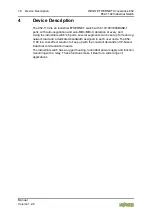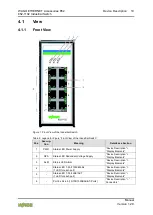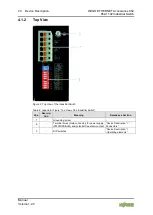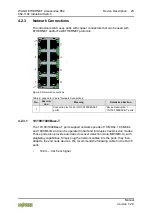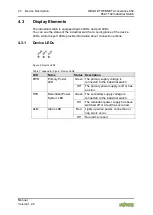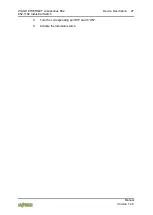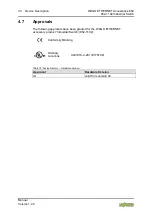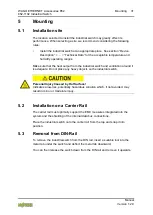
16 General
WAGO ETHERNET Accessories 852
852-1102 Industrial Switch
Manual
Version 1.2.0
3.6
Functioning of Switches
Switches analyze all incoming data packages and forward them to the port where
the corresponding destination address is located. Exceptions are the multicast
and broadcast telegrams, which are forwarded to all active ports of the switch.
For selective forwarding of the telegrams, each switch contains of an address /
port assignment table in which the assignments of the destination addresses to a
specific port of the switch are stored. The address / port mapping table is typically
generated and maintained automatically by the switch through a self-learning
process. Incoming data packages are analyzed, filtered and forwarded directly to
the appropriate port by using this assignment table based on their destination
address. The incoming data package is sent to all ports, if there is no
corresponding entry in the assignment table for a destination address. If a
destination address answers, the assignment table is complemented with this
destination address as well as the associated port.
3.7
Store-and-forward switching mode
In “Store and Forward” mode, the ETHERNET switch caches the entire data
telegram, checks it for errors (CRC checksum) and if there are no errors, puts it
in a queue. Subsequently, the data telegram (MAC table) is selectively forwarded
to the port that has access to the addressed node.
The time delay required by the data telegram to pass the store-and-forward
switch depends on the telegram length.
Advantage of “Store and Forward”:
The data telegrams are checked for correctness and validity. This prevents faulty
or damaged data telegrams from being distributed via the network.
3.8
Line Depth in PROFINET
Line depth (cascading) is the number of all switches in a communication path.
The maximum line depth depends on the send cycle and the switch mode used.
Observe line depth!
Observe the maximum line depth for switches in Store-and-Forward mode
according to the “Topology Check” section of PI-PROFINET Commissioning
Guideline (PROFINET_Commissioning_8081) (
3.9
Port Speed & Duplex Mode
After a cable is plugged into a specific port, the system uses auto negotiation to
determine the transmission mode for the new twisted pair connection:

















